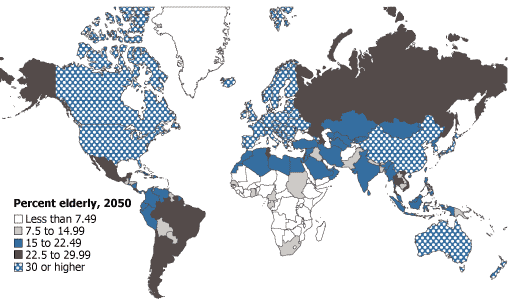
On January 22, the Guardian ran an article about how Taro Aso, Japan’s new finance minister, said:
“Heaven forbid if you are forced to live on when you want to die. I would wake up feeling increasingly bad knowing that [treatment] was all being paid for by the government,” he said during a meeting of the national council on social security reforms. “The problem won’t be solved unless you let them hurry up and die.”
I’m going to give Mr. Aso the benefit of the doubt and assume he meant to say that elderly people should have the right to refuse end-of-life care – which seems reasonable enough to me. If you want to die, you should be able to die. If you don’t, you don’t.
But what’s interesting to me is not what the finance minister said but what this means for Asians and Asian Americans going forward in the next fifty years. Japan, China, and India are facing huge crises when it comes to their growing elderly population.
In Japan, according to the same Guardian article, a “quarter of the 128 million population is aged over 60. The proportion is forecast to rise to 40% over the next 50 years.”
In China, things are worse. According to this New York Times article:
By 2015 there will be 220 million people more than 60 years old in China, compared with about 180 million today. Encouraged by Mao Zedong, who believed more was better, China’s population boomed in the middle of the past century. Rapid growth was cut short in 1979 when the state introduced the one-child policy.
Within 40 years, China will have nearly 500 million elderly people, according to current projections, or about one-third of its future population of nearly 1.5 billion, which will put a huge strain on its financial and human resources, experts say.
Things in India are not much better. According to this article in The Hindu:
By 2050, India will be home to one out of every six of the world’s older persons, and only China will have a larger number of elderly people, according to estimates released by the United Nations Population Fund.
But Japan, China, and India are not the only three countries with these problems, according to that same article from The Hindu:
Thirty years ago, there were no “aged economies,” in which consumption by older people surpassed that of youth. In 2010, there were 23 aged economies. By 2040, there will be 89.
The United States is going to go through a similar struggle, but just not to the same scale as some of the countries mentioned above. According to this NPR article:
“The population age 65 and older is expected to more than double between 2012 and 2060, from 43.1 million to 92.0 million. The older population would represent just over one in five U.S. residents by the end of the period, up from one in seven today.”
What does this all mean for Asian and Asian Americans?
For Asians living in Asia, I wonder if this will have an effect on the way younger people perceive and treat their elders. Will the idea of filial piety stay the same or change for the better/worse as more and more of the resources and money are spent on a population of people that are seen as not “contributing?” Being that I’m not Asian Asian, I don’t feel it is my place to comment on it one way or the other but I’m curious to find out what happens.
In the United States, the growing older population is a different problem. The elderly tend to be Caucasian and the young tend to be more diverse (which includes Asian Americans). Will this exacerbate tensions between the two groups as resources (aka: tax dollars) are being diverted from one group to the other?
While doing some research, I came across this article in The Daily Republic based in South Dakaota that touches upon the problem:
“It behooves us as a country to invest in young people,” Lichter said. “A disproportionate share of children is Hispanic. There’s a lot of concern that the generation divide, which we’ve always had, will be exacerbated by a new racial divide of older whites and younger minorities.”
Among those concerns are that older, white voters won’t support bond issues for schools and other improvements.
“This is something that’s being played out across the country. We need to forge a new social contract between older white people and younger minority people,” he said. “I think it’s important for older people to think about mutual benefits.”
Keep in mind that in the next 40 years this is going to become more and more of an “issue” – not just for Asian Americans but all Americans as we go from a Caucasians majority country to a minority-majority country (projected sometime in 2043).
As a father of a toddler, I believe we always need to invest in the future (our children) first but not necessarily at the expense of seniors and our elderly. How do you do that? By planning for it now. However, it’ll take the type of political bipartisanship that I have never seen in this country in my lifetime. But I could be wrong. I hope I’m wrong.
Image credit: Population Reference Bureau







